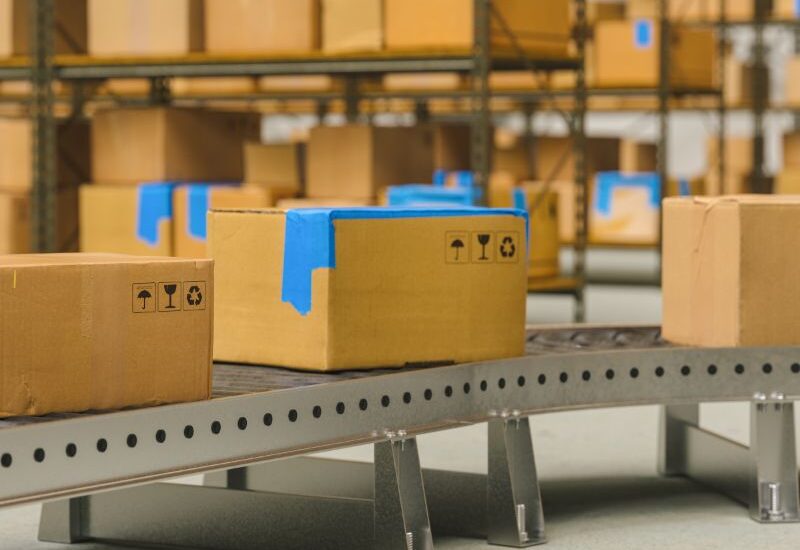Finding the right products at the right price is crucial to the success of any retail or e-commerce business. Whether you’re launching a new venture or expanding your product line, understanding how to source wholesale products can make or break your growth. In this wholesale sourcing guide, we’ll walk you through the best strategies, platforms, and tips to help you succeed.
Let’s dive into the proven steps to source wholesale products effectively and build a thriving business.
Understand Your Product and Market
Before you jump into finding wholesale suppliers, it’s important to know exactly what you need. Taking the time to research and understand your product will save you time, money, and potential headaches down the road
Key Steps:
- Research Market Trends: Use tools like Google Trends, Amazon Best Sellers, or industry reports to spot trending products.
- Know Your Target Audience: Understand who you’re selling to, their preferences, and purchasing behavior.
- Niche vs. General Products: Niche products often have less competition and higher profit margins, while general products can appeal to larger markets.
When you understand what products you want and who will buy them, you’re much better positioned to source the right goods.
Decide Where You Want to Source From
One of the most important decisions when you source wholesale products is choosing where you want to get them from. Should you work with local suppliers or import from overseas? Each option has its advantages—and potential challenges.
Domestic vs. International Sourcing: Pros and Cons
Domestic Sourcing (e.g., USA, Canada)
Pros:
- Faster Shipping Times: Products reach your warehouse or customers quickly.
- Higher Quality Standards: Domestic manufacturers must comply with strict production regulations.
- Easier Communication: No language barriers and easier time zone coordination.
- Lower Risk: Easier to resolve disputes legally if something goes wrong.
Cons:
- Higher Costs: Manufacturing and labor costs are typically higher, impacting profit margins.
- Limited Product Variety: Some product categories (like electronics or textiles) may have fewer options domestically.
International Sourcing (e.g., China, India, Vietnam)
Pros:
- Lower Prices: Overseas suppliers often offer significantly cheaper production costs.
- Wider Selection: Greater access to a huge range of products and manufacturers.
- Scalability: Easier to scale large orders once you find a reliable supplier.
Cons:
- Longer Lead Times: Shipping can take weeks or even months.
- Quality Control Challenges: Greater need for product inspections and due diligence.
- Communication Barriers: Language differences and time zone gaps can slow down negotiations.
- Import Regulations: Additional paperwork, duties, and taxes may apply.
Popular Sourcing Regions for Wholesale Products
Depending on your product category, here are some of the most popular regions to consider when finding wholesale suppliers:
- United States: Best for premium quality products, health and beauty goods, specialty foods, and made-in-USA branding.
- China: Ideal for a wide range of products, including electronics, toys, apparel, and home goods. The go-to for high-volume, low-cost sourcing.
- India: Known for textiles, jewelry, handcrafted goods, and eco-friendly products. Increasingly competitive with China for certain categories.
- Vietnam: A growing hub for textiles, furniture, footwear, and consumer electronics manufacturing—often offering better quality than other low-cost countries.
- Mexico: Great for businesses targeting North America with shorter lead times and reduced tariffs under USMCA agreements.
Choosing the right region depends on your budget, product type, lead time expectations, and target market preferences. Weigh the pros and cons carefully before deciding where to start your wholesale product sourcing journey.
Methods to Source Wholesale Products
When it comes to finding wholesale suppliers, you have more options today than ever before. Thanks to online platforms, global trade shows, and professional sourcing services, the methods for sourcing wholesale products are varied and flexible. Let’s break down the most effective ways to source wholesale products successfully.
Wholesale Marketplaces
Online wholesale marketplaces are one of the most popular ways to source wholesale products—especially for entrepreneurs and small businesses just getting started.
Here are some top platforms to consider:
- Alibaba: The world’s largest online marketplace for bulk products across every imaginable category. Great for both beginners and seasoned business owners.
- Faire: A curated platform that connects retailers with independent brands. Ideal for boutique owners looking for unique, small-batch products.
- Global Sources: Specializes in electronics, mobile accessories, and industrial supplies, often offering higher-quality alternatives to Alibaba.
- ThomasNet: A powerful directory for finding wholesale suppliers in North America, particularly in industrial and commercial sectors.
Tip: Always request samples and verify seller credentials before placing large orders on any marketplace.
Trade Shows and Expos
If you want to establish strong relationships and physically inspect products, attending trade shows is a fantastic way to source wholesale products.
Benefits of Trade Shows:
- Face-to-Face Networking: Build trust and rapport with suppliers directly.
- Product Inspection: See, touch, and compare products firsthand before committing.
- Exclusive Deals: Suppliers often offer special trade show pricing and promotions.
Popular Trade Shows for Wholesale Sourcing:
- Canton Fair (China): One of the largest and most comprehensive trade shows in the world, covering almost every product category imaginable.
- ASD Market Week (USA): Focused on consumer merchandise, including gifts, home décor, fashion accessories, and more.
Tip: Prepare a list of questions and bring business cards when attending trade shows to make the most of your meetings.
Manufacturer Directories
Manufacturer directories are another valuable tool in your wholesale sourcing guide. They allow you to connect directly with verified manufacturers and cut out middlemen.
Top Resources:
- NAICS Code Lookup: Use North American Industry Classification System (NAICS) codes to find industry-specific manufacturers.
- Kompass Directory: A global B2B directory with a large database of manufacturers and suppliers across industries.
- Industry-Specific Directories: Some industries have their own dedicated directories, which can offer highly targeted leads.
Tip: Always cross-reference manufacturers with third-party reviews or ratings before engaging.
Third-Party Sourcing Agents
Hiring a sourcing agent can be a smart move, especially if you’re dealing with international suppliers and large orders.
When to Use Sourcing Agents:
- You’re new to international sourcing and want help navigating language barriers.
- You need assistance with supplier verification, negotiation, and quality inspection.
- You plan to place high-volume or custom product orders requiring close monitoring.
Things to Watch Out For:
- Hidden Fees: Some agents earn commissions from suppliers, leading to conflicts of interest.
- Lack of Transparency: Always ask for full reporting on supplier options and negotiations.
- Scams: Only work with vetted, reputable sourcing agents with strong references.
Tip: Clearly define the scope of work and fee structure with any sourcing agent upfront.
Dropshipping and Print-on-Demand Suppliers
If you’re looking for a low-risk way to source wholesale products for small businesses, dropshipping and print-on-demand models are excellent starting points.
Dropshipping Benefits:
- No Inventory Investment: You only purchase products after a customer places an order.
- Lower Startup Costs: Focus on marketing and sales rather than warehousing and logistics.
- Flexibility: Easily test new products without financial risk.
Popular Dropshipping Platforms:
- Spocket: Connects you to dropshipping suppliers in the U.S. and EU for faster shipping times.
- Printful/Printify: Great for custom apparel, home goods, and accessories using print-on-demand models.
Tip: Carefully vet dropshipping suppliers for product quality, shipping speed, and customer service to protect your brand reputation.
How to Vet and Choose Reliable Suppliers
Not all suppliers are created equal. Choosing the wrong one can lead to poor quality products, late deliveries, and damaged customer trust.
Vetting Checklist:
- Request Samples: Always test product quality before committing to a large order.
- Check Certifications: Especially for products like electronics, toys, or food.
- Verify Company Information: Ensure they are a legitimate, registered business.
- Read Reviews: Look for supplier ratings, testimonials, and business history.
- Assess Communication: Reliable suppliers respond promptly and professionally.
These wholesale product sourcing tips will help you separate the trustworthy suppliers from the risky ones.
Negotiate Terms Wisely
Negotiating terms is an essential part of successful wholesale sourcing.
What to Negotiate:
- Price per Unit: Especially when ordering in bulk.
- Minimum Order Quantity (MOQ): See if you can negotiate a lower MOQ for your first order.
- Payment Terms: 30/70 terms (30% upfront, 70% on delivery) are common internationally.
- Shipping Timelines: Clarify expected delivery dates and penalties for delays.
Also, familiarize yourself with Incoterms (such as FOB – Free on Board) to avoid hidden shipping costs.
Place a Test Order First
Never jump into a large order immediately, even if you feel confident.
Why Test Orders Matter:
- Evaluate product quality in a real-world setting
- Assess packaging, branding, and labeling
- Test shipping times and logistics
- Spot any issues before committing significant money
This small investment upfront can prevent major losses later.
Protect Your Business
When you source wholesale products, protecting your business legally and financially is critical.
Safety Measures:
- Create Clear Contracts: Include pricing, timelines, product specs, and penalties for non-compliance.
- Use Secure Payment Methods: Escrow services, PayPal, or Letters of Credit are safer than wire transfers.
- Know Your Import Regulations: Make sure your products comply with your country’s import laws and safety standards.
Keep Backup Suppliers
Relying solely on one supplier can leave your business vulnerable to delays or stock shortages.
Tips for Managing Suppliers:
- Build relationships with at least two or three suppliers
- Test backup suppliers periodically
- Stay informed about supply chain risks in your industry
This strategy ensures you can maintain inventory even if one supplier falls through.
Learning how to source wholesale products is one of the most important skills for any entrepreneur or small business owner. From understanding your market to vetting suppliers and protecting your operations, each step matters.
By following this wholesale sourcing guide, you’ll be better prepared to find reliable suppliers, negotiate favorable deals, and grow your business sustainably. Success in wholesale products for small businesses isn’t just about finding the cheapest product—it’s about finding the right product at the right quality and price.



